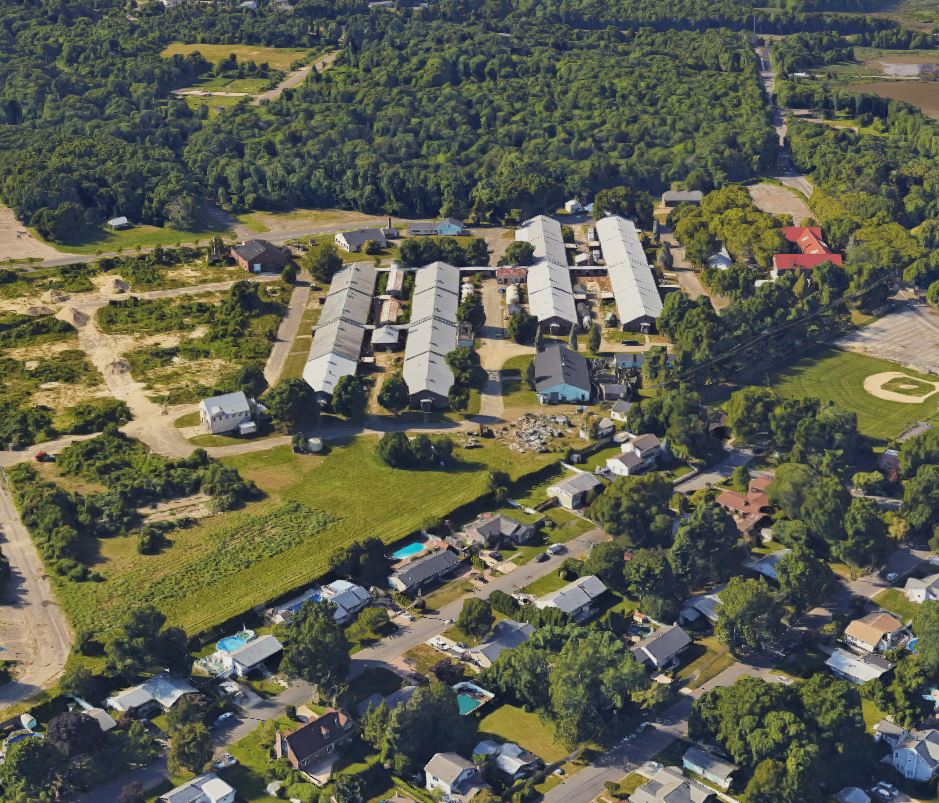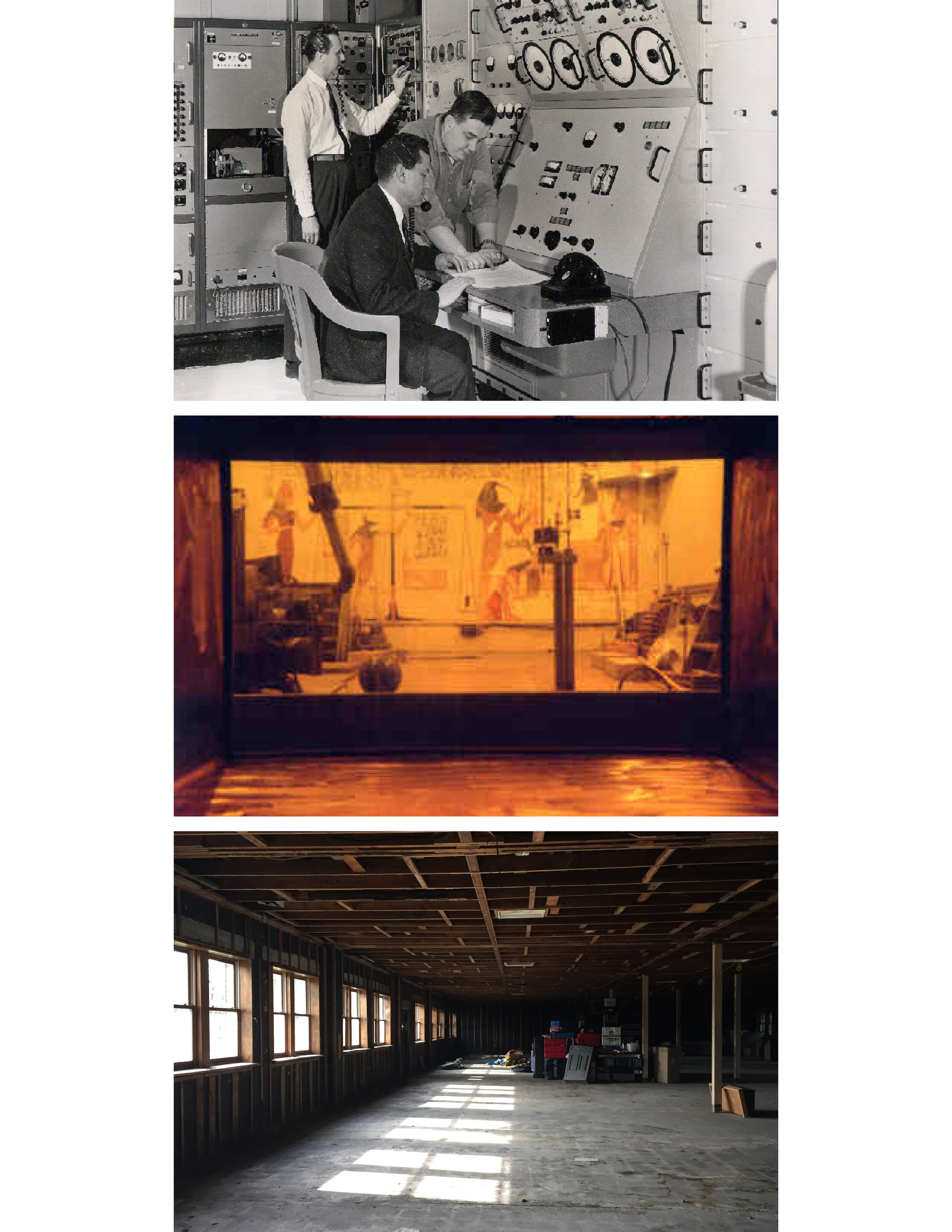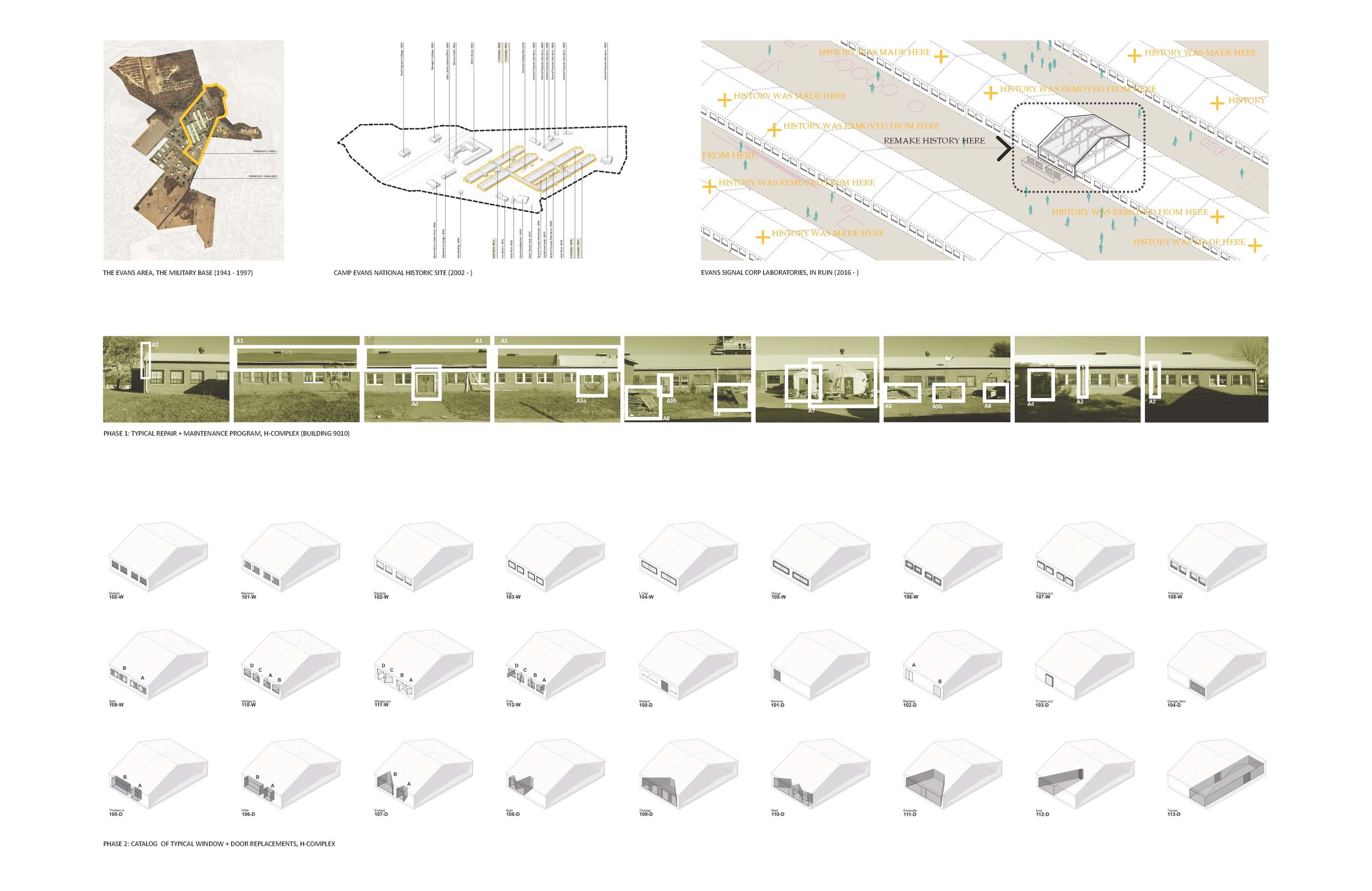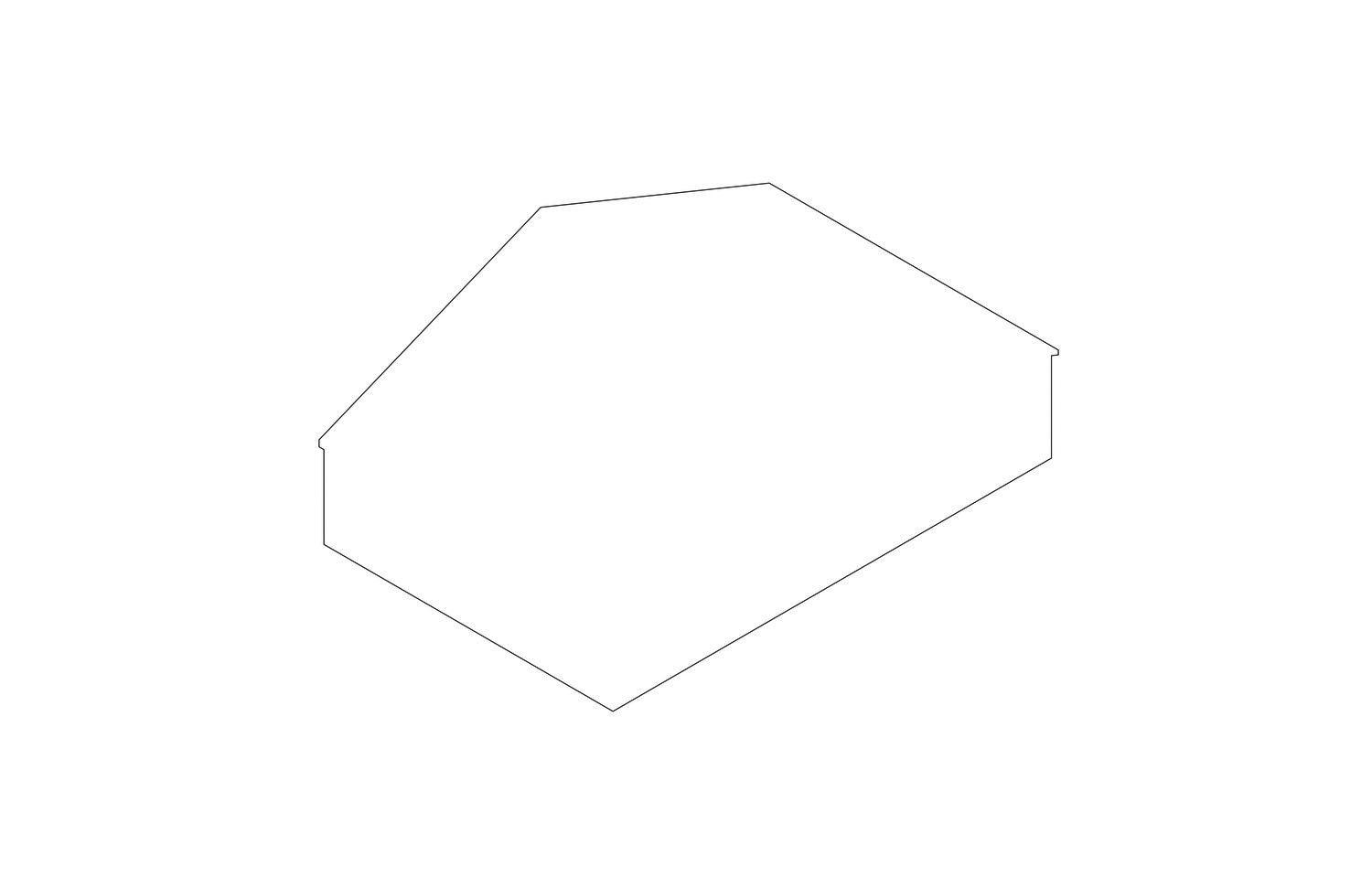ALTERATIONS TO A SPY BASE
FORMER U.S. ARMY SIGNAL CORPS RADAR LABORATORIES
BELMAR, NJ
This project is a preliminary design that proposes a modest maintenance + repair program to a series of large buildings located within the Camp Evans National Historic District, a decommissioned top-secret military radar research and development facility. It is an exercise is maximizing public access and cultural interpretation through minimal architectural interventions - the replacement of windows and doors. These alterations aim to re-synchronize this place’s unique (and previously classified) cultural history with its ordinary, non-descript - yet historically significant - architecture. As an exercise in experimental preservation, it proposes a remapping of the buildings’ (current) material, (future) use, and (historical) significance. “Evans Area” was considered one of the nation’s most top-secret sites during the 20th century and was named a National Historic District in 2002. From 1912 thru the Cold War, it was a hub of modern (wireless + radio) communications technology innovation, and since 1941, was operated by the US Army Signal Corps as an electronics development, testing, and production facility. The design proposal focuses on a 96,000 SF complex of buildings known as the Evans Signal Corps Laboratories, consisting of four identical buildings previously used for a variety of research, manufacturing, storage, and administrative activities. Although considered to be one of the principal sites in the US associated with the development of radar technologies, today it is in a state of near-ruin. The design’s scope of work includes repairs aimed at stabilizing further deterioration of the exteriors, a new access/egress system for the interior, and an interpretive program that uses the new windows and doors as display vessels for previously classified information about the Evans Area. As such, the design seeks to imbue the utilitarian character of the architecture with a sense of strangeness - as an echo of the covert activities for which it is now deemed historic. The product of this work is a typological catalog of new windows and doors





